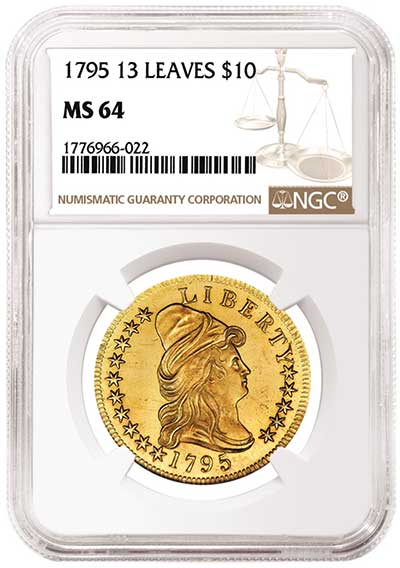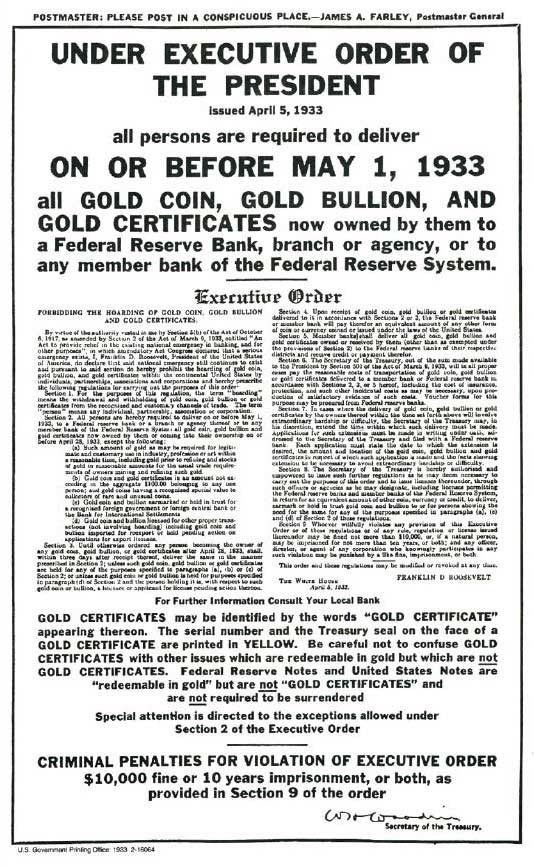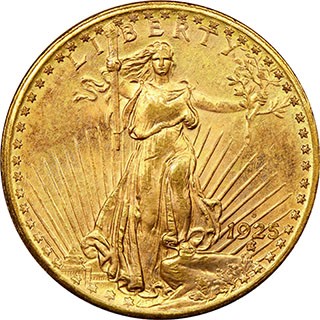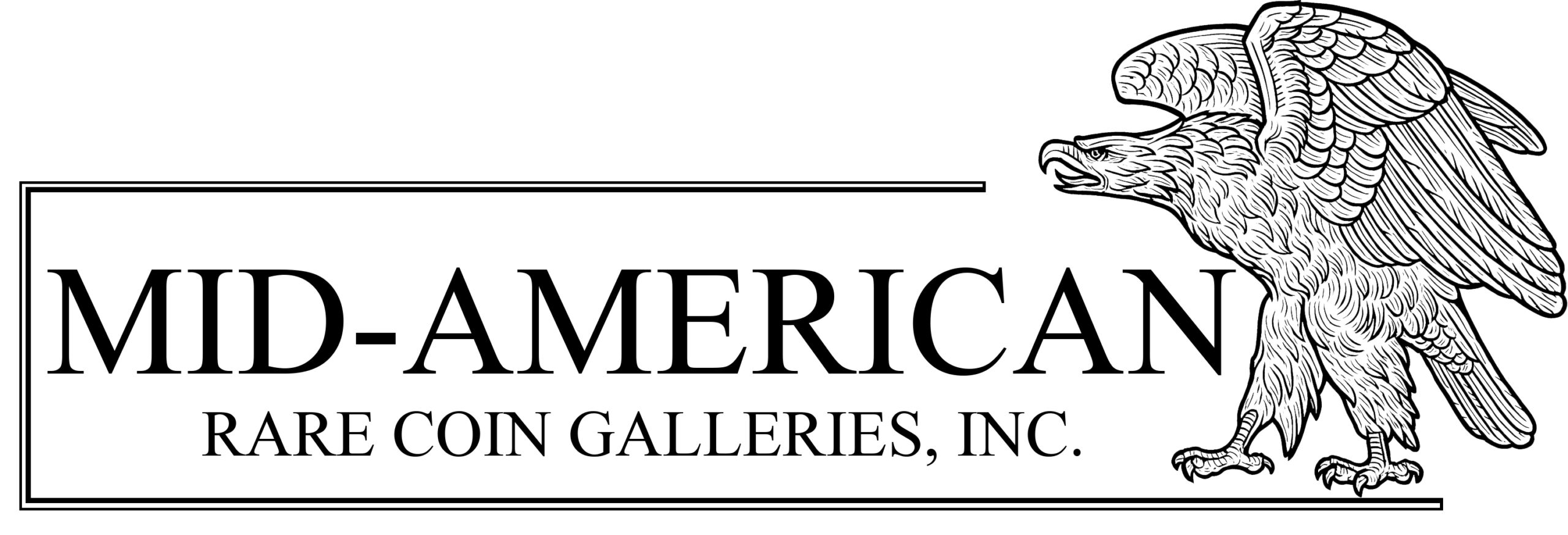US gold coins have been a fascination of mine since the start of my career in the 1970s. Back then, there was a high demand and a significant premium over gold spot prices for common date US gold coins. We would handle hundreds of coins during a typical week of going to coin shows and visiting shops. After getting burned a few times on counterfeits, I became determined to become an expert on authentication. Seeing and handling thousands of coins in a few short years served me well in that process.

I later became interested in rare dates and issues. In 1795, the United States began producing gold coins. The classic first series didn’t end until 1933. It’s a vast subject and one that I’m still learning about 45 years later. My knowledge soared about 10 to 15 years ago when doing research for my book that was done in conjunction with the Smithsonian Institution, the Encyclopedia of United States Gold Coins 1795-1933. There is no better way to learn a subject than to study the nuances of a series. Knowledge gained is always the most significant return. The most significant personal return when doing my writing is the knowledge gained.
Treasure on the High Seas
After decades, it still amazes me how much new information continually surfaces on the subject of US gold coins.
Over the years, there have been incredible US gold coins found on countless shipwrecks. The saga of the SS Central America, which sank in 1857, leaving behind its treasure-laden wreckage ranks as one of the most important numismatic stories of all time. Whenever these treasures are found, reference books must be re-written on the rarity of US gold coins.
But shipwrecks are not the only source of new US gold coins coming into the marketplace, however.
Since the beginning of US coinage, quantities of gold coins have been shipped overseas for various reasons. Often, if the melt value exceeded the face value, even by a small amount, coins would be shipped overseas and melted. Because coins produced earlier than 1834 were routinely melted for bullion content, pre-1834 coinage is relatively rare. For example, none of the 10,000-plus gold coins found in the Central America wreckage in 1857 were dated before 1834.
Massive numbers of later-date coins were sent overseas for international trade, loans, and other uses in everyday commerce. It’s hard to fathom millions of dollars’ worth of gold coins’ face value sent in shipments rather than the instant digital transfer of the money we have today.
Hoarding Gold
Another factor that came into play was the confiscation of gold in 1933. As a result, millions of US gold coins were returned to the government. Officially, the 1934 Gold Reserve Act stated, “All gold coins of the United States… shall be formed into bars of such weight and degrees of fineness as the Secretary of the Treasurer may direct.” Over time, millions of coins were turned into the gold bars that now reside at Fort Knox. A headline from The Numismatist in 1936 stated, “MANY GOLD RARITIES NOW REPOSE IN BARS”.

There were exceptions for rare collectors’ coins, but in 1934, that was a pretty high bar to overcome. Coins we consider rare and collectible now were only worth face value at the time. Undoubtedly, large quantities of US gold coins made their way to banks and institutions around the world. Many of them have sat for decades and, until recently, there was just a trickle of coins sent back to the US regularly. David Akers first mentioned this in his classic books on gold written in the late 1970s and early ’80s. He talks about how the rarity of many late-date Saint-Gaudens Double Eagles was drastically impacted by coins found in European hoards.
In the last few years, the amount of US gold coins arriving from overseas sources has risen dramatically. It’s hard to know the exact number of coins entering the market as these are closely held secrets by those handling the coins. Large numbers of any coin hoard must be handled carefully to minimize the impact on the marketplace.
Gold Coins Back to Market

Most of the recent coins being sold into the market are carefully placed with companies that have large retail operations. You may have seen one of the countless TV infomercials offering gold coins from Europe. Gold coins have been widely distributed and become a popular investment in recent months.
Normally, gold coins from European sources are handled by just a few large wholesale companies in the US. That has been the case for decades. Some of the more recent coins entering the market are actually being offered at auction. For instance, Stack’s Bowers has been offering a steady stream of US gold coins from what they call the “Fairmont Collection”. The sales have been very successful and will probably continue into the near future.
A couple of weeks ago, I received an auction catalog from the German coin company Künker, one of the largest and most well-respected rare coin auction houses in Europe, specializing in world and ancient coins. I have participated in several of their auctions while attending the World Money Fair in Berlin, Germany. I’m fortunate to be on their mailing list, as the most recent auction features a stunning selection of US gold coins.
When I looked at the Auktion 340 catalogue from September 30-October 1, 2020, I realized that the gold coins were not from one collector, but cherry-picked from a large hoard of gold coins. The sale features dozens of interesting US rarities, but most have a similar appearance and none are extremely high grade. There are quite a few Mint State coins, but most are in the lower states of preservation and show gentle signs of circulation.
NGC’s Germany Office in High Gear
Since this sale will take place in Germany, very few, if any, US dealers will be able to attend. However, the more important coins are NGC-certified. Künker has often worked with NGC’s German office (NGC GmbH) to offer NGC-certified coins in its auctions, recognizing that certified coins bring higher prices realized. This sale is a draw for anyone who studies US gold coins.
Most think European shipments of gold coins consist primarily of Double Eagles. That has been the case for decades, but as this sale clearly illustrates, many rare gold coins ended up in the vaults of banks overseas. All seven mints that produced gold coins are represented in this sale, with Carson City Mint coins at the forefront. I found the offerings of Charlotte and Dahlonega Half Eagles to particularly fascinating. Coins from the Carson City Mint are also heavily featured.
Some of the highlights include:
- Lot 3035 – an 1847-D Half Eagle graded NGC AU 58
- Lot 3054 – an 1857-C Half Eagle graded NGC MS 61
- Lot 3059 – an 1860-C Half Eagle graded NGC MS 61
- Lot 3102 – an 1891-CC Half Eagle graded NGC MS 63+
- Lot 3103 – an 1893-CC Half Eagle graded NGC MS 63
- Lot 3124 – a 1909-O Half Eagle graded NGC MS 61
- Lot 3171 – an 1863-S Eagle graded NGC AU 55
- Lot 3175 – an 1865-S Eagle graded NGC MS 61
- Lot 3184 – an 1871 Eagle graded NGC AU 58
- Lot 3209 – an 1891-CC Eagle graded NGC MS 61
- Lot 3216 – a 1911-D Eagle graded NGC MS 61
- Lot 3220 – an 1852-O Double Eagle graded NGC MS 61 (cover coin)
- Lot 3247 – an 1876-CC Double Eagle graded NGC MS 61
- Lot 3270 – an 1881 Double Eagle graded NGC AU 58 (extremely rare)
- Lot 3298 – an 1891-CC Double Eagle graded NGC MS 60
- Lot 3310 – a 1924-D Double Eagle graded NGC MS 63
- Lot 3330 – a 1927-S Double Eagle graded NGC MS 62
The rare coin market has been turned upside down during the COVID-19 crisis, and this sale will continue to reshape auctions as we know them. I personally can’t wait to find out what will show up next!
